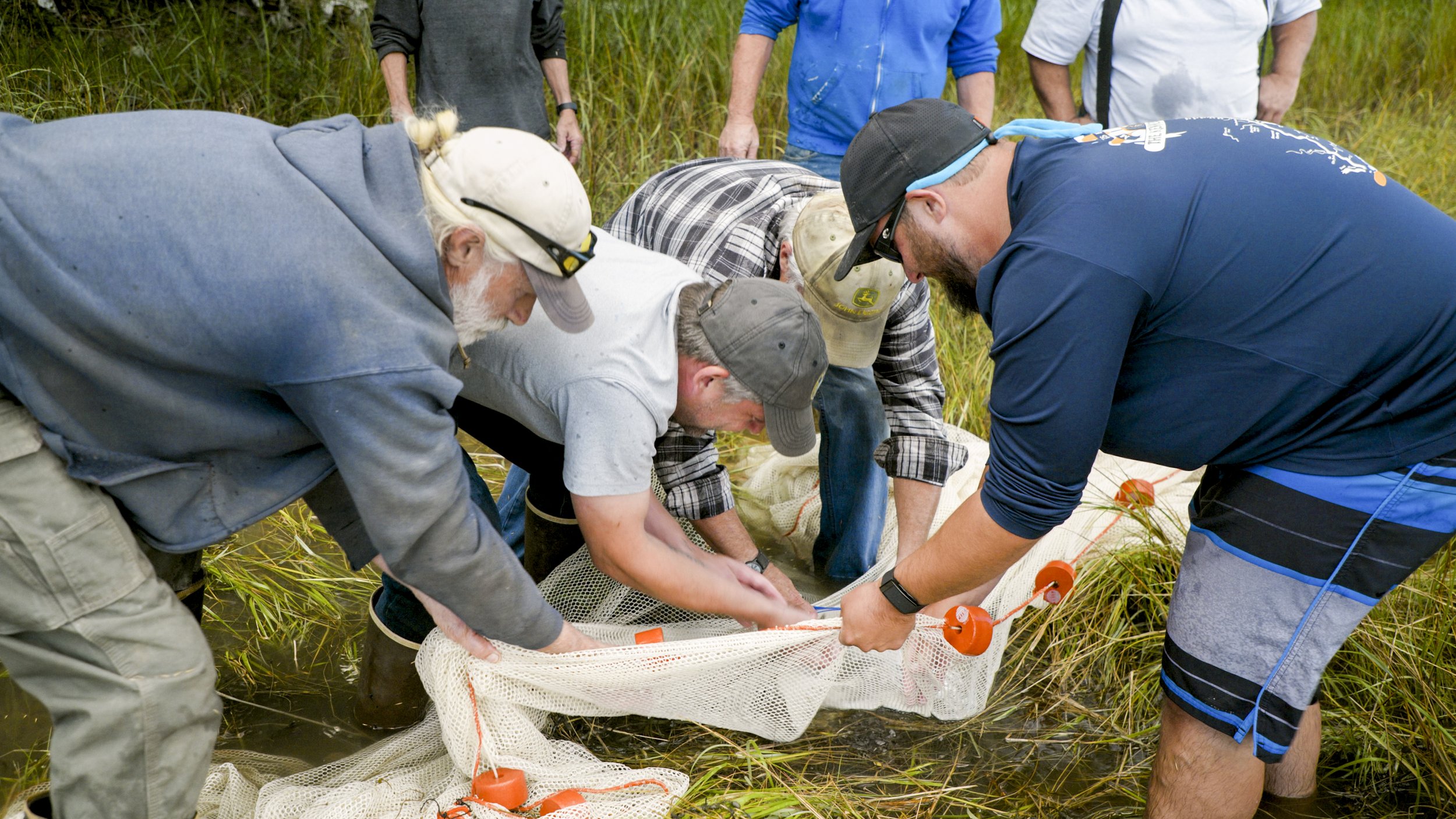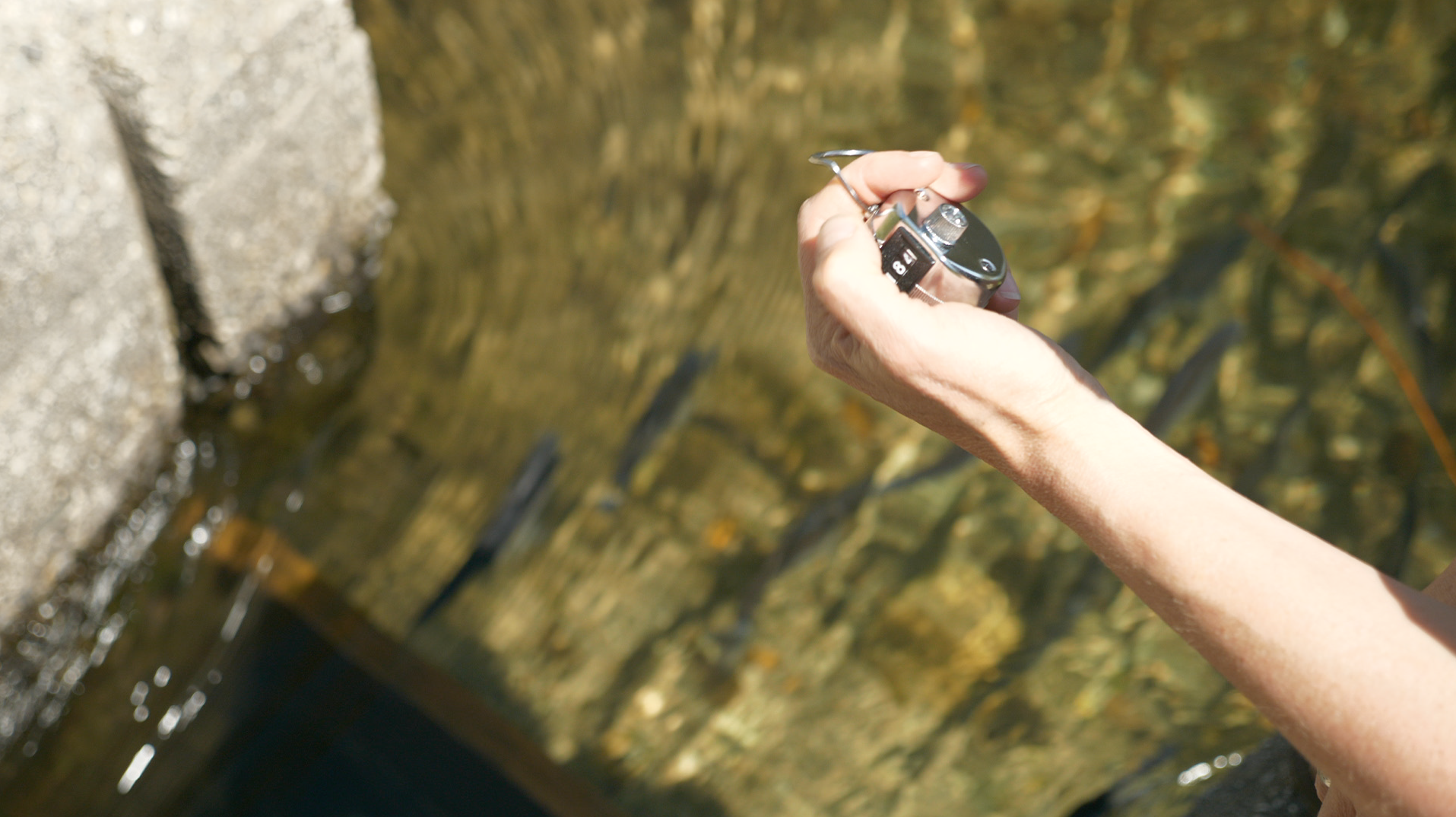
Tools for Communities
Alewife Committees
Several towns in Maine have volunteer alewife committees that often focus on organizing river herring counts and monitoring their runs. This might include collecting biological data, count data, water temperature and other water quality data, and more. Alewife committees also may monitor their local runs during the season to remove any blockages that prevent river herring from reaching their spawning habitat. Some alewife committees have developed plans to restore their local runs, and worked with partners to accomplish that restoration.
To learn more, send an email to gomriverherringnetwork@gmail.com and we will point you in the right direction
How to count your alewife run
There are several resources that may be useful to communities who are counting their local alewife runs:
This google sheet is based on the volunteer count methods outlined in Nelson 2006, where volunteers count river herring in 30-minute interviews four times each day for the duration of the run. It can be copied and customized as needed.
Technical report on Coordinating Volunteer River Herring Monitoring Programs in Maine and Massachusetts: Operations, Strategies and Recommendations. This report provides an overview of recommendations for volunteer counting programs (developed through interviews with several existing volunteer efforts), including: volunteer recruitment, volunteer training, volunteer retention, volunteer communication, and data collection, organization, and use.
A Guide to Statistical Sampling for the Estimation of River Herring Run Size Using Visual Counts (Gary A. Nelson, MA Division of Marine Fisheries, 2006)
Visucount Software (DOWNLOAD). This link will download a .zip file that contains the Visucount software package, which was developed by the MA Division of Marine Fisheries and can be used to calculate estimates of river herring run size based on visual counts.
Atlantic States Marine Fisheries Commission (ASMFC) Report on River Herring Data Collection Standardization Workshop (2016)
Video on how to count river herring from the Association to Preserve Cape Cod.
To learn more, send an email to gomriverherringnetwork@gmail.com and we will point you in the right direction
Community Science Tools
Community scientists can play an important role in collecting information about river herring runs and their local ecosystem. Below are links to standardized protocols and data sheets for monitoring temperature; juvenile emigration timing, relative abundance, and length/weight; and zooplankton. Note that these protocols have specific instructions for sharing data and samples with the GOM River Herring Network.
We will update this section with additional tools or resources for river herring community science as they are developed. Please reach out to Emily (efarr@manomet.org) or Mike (mthalhauser@coastalfisheries.org) with any questions.
Temperature Monitoring
Temperature is an important factor that plays a role in the start of river herring runs, their spawning, and survival. Monitoring water temperature in streams throughout the season provides important data that we can link to run timing, survival and changes we’re seeing in Maine streams. For more detail about temperature monitoring and in-depth protocols, please reference the Kennebec Estuary Land Trust’s Water Temperature Monitoring Protocol for Citizen Scientists.
Juvenile Emigration Monitoring
While counting adults returning to lakes and ponds to spawn is important, understanding the emigration of juvenile river herring is just as valuable as the juveniles are the future of the stock. These data are used by the state and Federal management agencies to help determine maturity schedules, bycatch caps and production models. At a local level, a better understanding of how to steward river herring at all stages of life has been a priority identified by the River Herring Network. Below are links to a standardized protocol and data sheets for measuring juvenile emigration timing, relative abundance, and length/weight (only if permitted to do so).
Zooplankton Monitoring
Zooplankton are food for river herring while they are in freshwater rearing habitat and they can be a good metric for the potential productivity of a pond. River herring affect zooplankton populations, and zooplankton affect river herring. Monitoring zooplankton can help understand productivity differences between ponds and within individual ponds over time.
Video demonstrating the zooplankton monitoring protocol, using both a commercially available zooplankton net and a homemade net.
Interactive webinar walking through how to build your own net for sampling zooplankton, using readily available supplies that you likely have around the house. Karen Wilson and Sharon Mann from the University of Maine also talk through the process of sampling zooplankton.
John Sheppard from Mass. DMF and Mike Brown from Maine DMR walk us through counting alewife and other river herring, using a scientific method that can be used by state and Federal fisheries managers.


